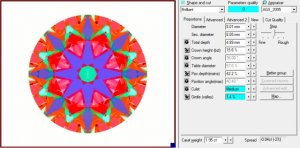Gypsy
Super_Ideal_Rock
- Joined
- Aug 8, 2005
- Messages
- 40,225
http://www.gia.edu/cs/Satellite?reportno=1162298360&childpagename=GIA%2FPage%2FReportCheck&pagename=GIA%2FDispatcher&c=Page&cid=1355954554547
This is a GIA Very Good Cut diamond that passes the HCA with a .8 FIC. the crown is really high, but it is balanced with the pavillion angle. I have no experience in what this will mean for actual in person performance, except to assume it will have a lot of fire.
No IS is available.
The symmetry is only good on it. And the color is L.
Can you please let me know what the performance of this diamond would be in person?
Is it one of the rare, nice, VG cut diamonds from GIA?
Or are there flags or compromises to the performance.
This is a GIA Very Good Cut diamond that passes the HCA with a .8 FIC. the crown is really high, but it is balanced with the pavillion angle. I have no experience in what this will mean for actual in person performance, except to assume it will have a lot of fire.
No IS is available.
The symmetry is only good on it. And the color is L.
Can you please let me know what the performance of this diamond would be in person?
Is it one of the rare, nice, VG cut diamonds from GIA?
Or are there flags or compromises to the performance.





300x240.png)